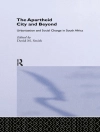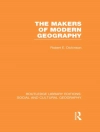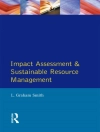The over-exploitation of important earth resources such as land and water has led to a number of environment-related problems the world over. At the same time, land-use change caused by various human activities has led to extinction of many plant and animal habitats and species. In this context, the relevance of biodiversity for human survival is becoming a major international political issue as scientific evidence builds on the global health implications of biodiversity loss. These issues are closely linked with the issue of climate change, as many of the health risks due to climate change are associated with rapid degradation of biodiversity. This present work focuses on holistic natural resource-based spatio-temporal planning, development and management and considers them as essential to save the degraded ecosystem for sustainable resource management. Contributions are compiled in two volumes: 1. Climate Change and Biodiversity and 2. Landscape Ecology and Water Management. Geoinformatics along with its tools such as remote sensing and Geographical Information Systems (GIS) have been used in assessing the results of various environmental problems both physical and social. These volumes will be useful for geographers, geoscientists, hydrologists, landscape ecologists, environmentalists, engineers, planners and policy makers.
Cuprins
Detection of Land Use Change and Future Prediction with Markov Chain Model in a part of Narmada River Basin, Madhya Pradesh.- Application of Remote Sensing and GIS for Landslide Disaster Management – A case from Abay Gorge, Gohatsion – Dejen Section, Ethiopia.- Landslide Disaster Management and Reduction- An Approach through Remote Sensing and GIS.- Population-Development-Environment Interface and Flood Risk in Murshidabad, West Bengal.- Development of Apple Cultivation Vis- a-Vis Other Fruit Crops in Himachal Pradesh: A Geographical Analysis.- Geospatial Approach to Cropping System Analysis A Block Level Case Study Of Hisar District In Haryana.- Dynamics of on-Farm Land Use Changes in terms of Inter-Specific Crop Diversity: A Case Study of Panipat District of Haryana State, India.- Population Characteristics and Distribution of Land Holdings in Cold Desert of Lahaul-Spiti District of Himachal Pradesh.- Spatio-Temporal Change Of Crop Diversification In Kerala.- Cropping System Analysis Using Geo-Informatics Approach: A case Study of Panipat District, Haryana.- Population Environment Interface In Urban India: A Geographical Analysis.- Temporal Urban Pattern Assessment of Haryana by Geo-informatics Technology.- Urban Environmental Settings of Dharuhera, Haryana Using Remote Sensing.- Qualitative Assessment of Bank Erosion Hazard In A Part of The Haora River, West Tripura District.- Soil erosion risk assessment and spatial mapping in Jhagrabaria watershed, Allahabad, U.P. (India) by using LANDSAT 7ETM+ remote sensing data, Revised Universal Soil Loss Equation (RUSLE) and Geographical Information System (GIS).- Spatio-Temporal Shift of Right Bank Of The Gumti River, Amarpur Town, Tripura And Its Impact.- Two Indices To Measure The Intensity Of Meander.- Integrated Approach of Remote Sensing and Gis for Watershed Management: A Case Study of Wga-2a Sub-Watershed of Godavari River Basin, Nagpur, Maharashtra.- Evaluation of Drainage Morphometry in Thalisain Areaof Lesser Himalaya (Using Remote Sensing and GIS Techniques).- Remote Sensing and GIS Approach for Hazard Vulnerability Assessment of Upper Alaknanda Basin, Garhwal Himalaya (Uttarakhand), India.- Dynamics of Urban Development and Wetland Management in East Kolkata Wetlands.- A Geospatial Analysis of Flood Risks and Vulnerability in Ogun-Osun River Basin, Nigeria.- Recurring Impact of North Indian flood Disasters on Agri-Masses: Benchmarking Remedial Strategies for Sustainable Development.- Micro watershed Level Conservation Strategies for Effective Land Management in Haheom Watershed, Kashmir Valley (J & K).












